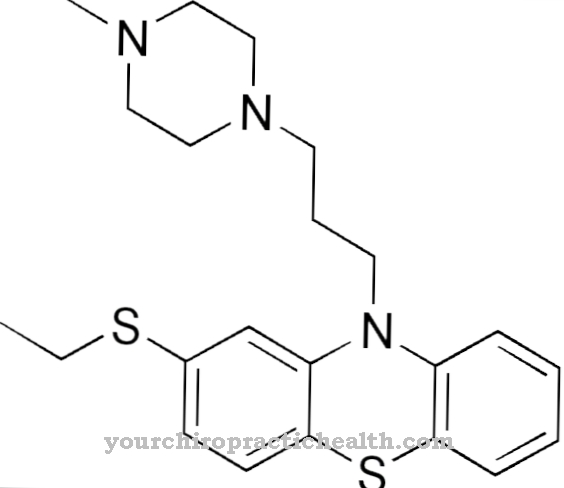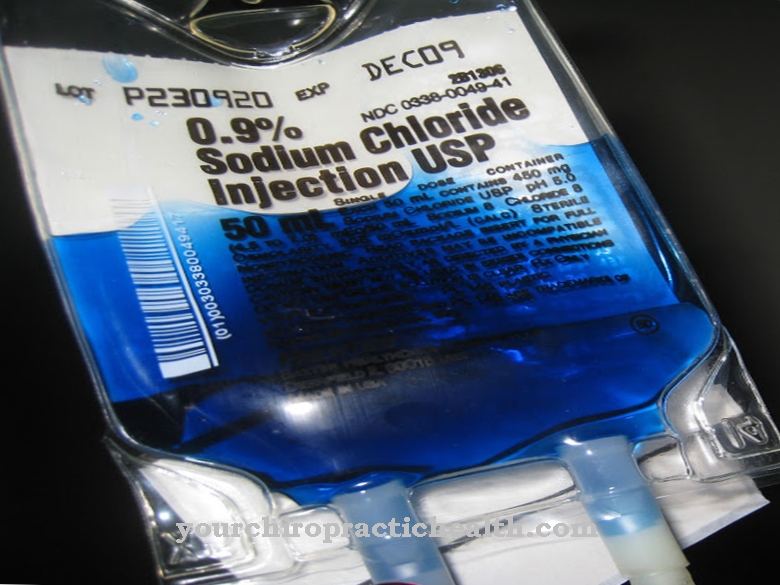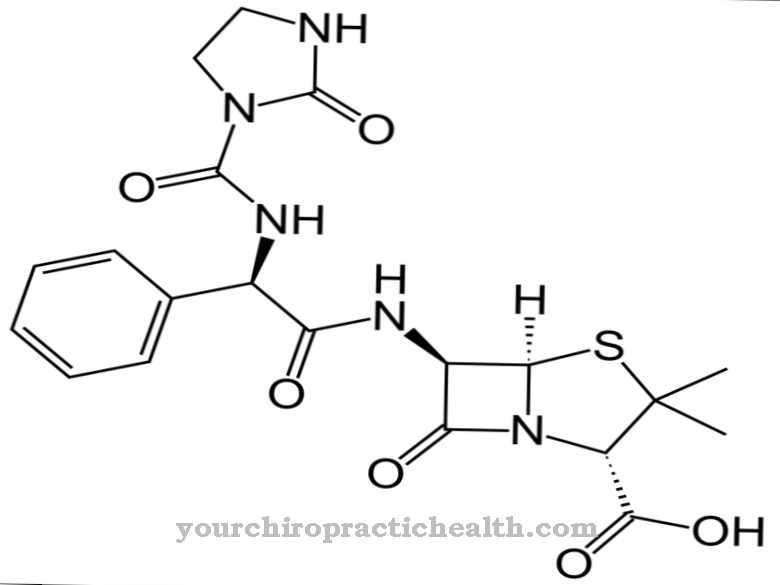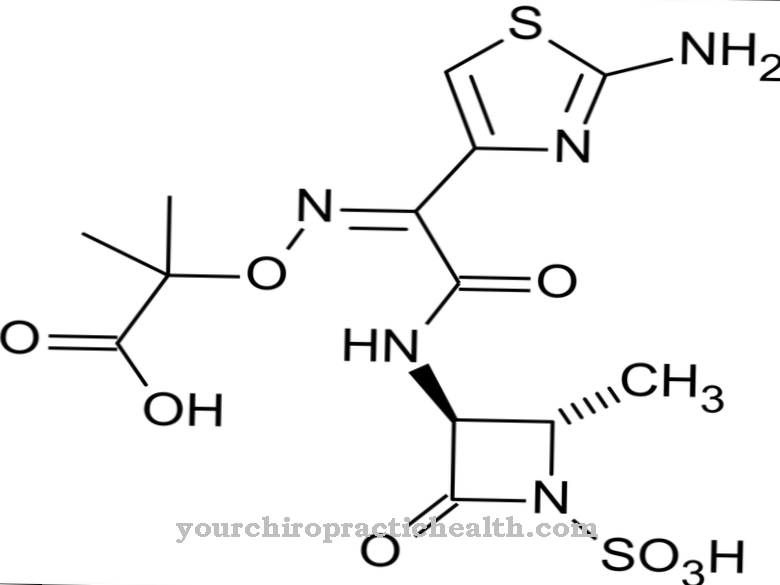Polymyxins are antibiotics that mainly fight gram-negative bacteria. However, the active ingredients only act on bacteria located outside the body cells. Their effectiveness is based on their reaction with the phospholipids in bacterial cell membranes.
What are polymyxins?

Polymyxins are complex branched polypeptides, which usually consist of ten amino acids. At the end they have hydrophobic fatty acids. The molecular structure enables the formation of a polarity that corresponds to that of the phospholipids in cell membranes. This enables these molecules to interact with the phospholipids and destroy their structure. As a result, the bacterial cell membrane dissolves. If it is completely destroyed, the bacterium's cell death occurs.
However, the polymyxins only reach bacteria positioned outside the cell. If the bacteria have already passed the membrane of the body cell, they can no longer be destroyed by these active ingredients.
Mainly two active ingredients of the polymyxins are used. This is on the one hand the polymyxin B and on the other hand the active ingredient colistin. The mode of action of both substances is similar. However, the polymyxins cannot be absorbed parenterally (bypassing the intestine) because they then have a neurotoxic and damaging effect on the kidneys. In more recent applications, colistin is therefore administered in the form of a prodrug as colistimethate sodium (CMS).
Pharmacological effect
Polymyxins are used to control mainly pathogenic gram-negative bacteria. Gram-negative and gram-positive bacteria differ in the structure of their cell membrane. Using the staining method developed by the Danish bacteriologist Gram, the two groups of bacteria can be easily distinguished from one another. A basic dye is used to color the cell membrane through complex formation. Gram-positive bacteria show a color, while Gram-negative bacteria do not stain.
Gram-positive bacteria have a thick murein shell made of peptidoglycans in their cell membrane, while gram-negative bacteria only have a thin murein layer. These differences affect the sensitivity of the bacteria to different antibiotics. A decision for or against certain antibiotics can be made by quickly determining the Gram stain.
Due to their polarity, polymyxins react mainly with phospholipids, which are bound to polysaccharides. Chemical bonds between polymyxins and lipopolysaccharides (LPS) are thus formed. Due to the thin murein layer in gram-negative bacteria, the LPS are better achieved by the polymyxins. As a result, the cell membrane is initially destroyed until the entire cytoplasm content is released and the bacterial cell dies.
The sensitivity of the bacteria to the polymyxins increases with the content of phospholipids in the cell membrane. It was found that the cell membranes of very sensitive bacteria bind more polymyxins than less sensitive bacteria. The chemical change of the active ingredients, for example by removing the terminal fatty acids, can reduce the effectiveness.
It was also found that the higher the concentration of antibiotics, the better the bacteria are fought. In studies, it was possible to observe the formation of bubbles on the bacterial membrane, which led to complete destruction. If the concentration was too low, the membrane could not be completely dissolved and the bacterium survived. In terms of treatment, it does not matter whether the bacteria are resting or dividing. Equally effective control is possible in both phases.
Medical application & use
Both polymyxin B and colistin have the same spectrum of activity. Among other things, they are particularly good at combating gram-negative bacteria such as Pseudomonas aeruginosa, Escherichia coli, Enterobacter spp., Pasteurella spp., Haemophilus spp., Vibrio spp., Bordetella spp. or Aerobacter. Particularly sensitive bacteria that respond well to treatment are Acinetobacter spp., Bordetella bronchiseptica, Escherichia coli, Klebsiella pneumoniae, Histophilus somni, Taylorella equigenitalis, Pasteurella multocida or Pseudomonas aeruginosa.
Resistance to the polymyxins can also occur. However, these rarely occur. Resistance can result from changes in the active substances on the bacterial surface, from inhibiting entry into the cell membrane or from changes in the bacterial surface. Some bacteria form digestive enzymes which break down the polypeptides of the polymyxins on the cell surface. In addition, some bacteria contain certain pumps that push antibiotics out of the cell. A change in the bacterial surface, which is noticeable for example through a lower density of phospholipids, can also contribute to resistance.
The main polymyxins used are polymyxin B or colistin. The mode of action of both substances is the same. However, colistin can only be used directly in ointments, in aerosols for inhalation therapy or orally for the treatment of the intestine. It is hardly absorbed in the intestine, so that it can only be administered parenterally (e.g. intravenously) for systemic use. Pure colistin is neurotoxic and toxic to the kidneys when taken parenterally. As a prodrug, however, it can be taken up as colistimethate sodium (CMS) without complications.
Risks & side effects
As already mentioned, colistin must not be absorbed parenterally, i.e. bypassing the intestine, as this can lead to neurotoxic and nephrotoxic effects. This also applies to other polymyxins. However, oral ingestion of colistin is not suitable for systemic use, as it is hardly absorbed through the intestine. As a prodrug in the form of colistimethate sodium (CMS), however, it can also be used systemically.



























